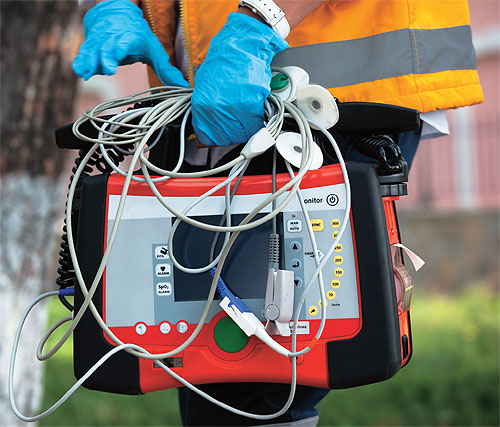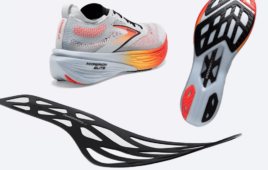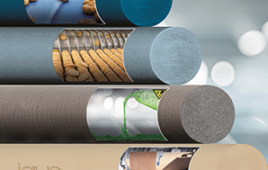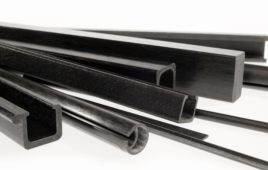By Lawrence W. Johnson, PolyOne Corporation, Avon Lake, OH
Changing requirements and regulatory restrictions can play a major role when making material decisions.

Products made of vinyl materials are ideally suited for surgical settings because of their clarity, chemical resistance, and sterilization properties.
Medical devices must meet an array of requirements that are not only a result of regulatory restrictions, but are also based on perception, cost pressures, and restrictions in material supply. Specialty polymers designed for medical devices can provide solutions to these and other hurdles by supplying the optimum balance of properties, performance, and compliance for each application.
Regulatory compliance is also creating new opportunities. In fact, you can use this body of constraints as a means to drive positive change within your products. With the increase in regulations governing plastics additives from flame retardants to plasticizers, opportunities can be found by anticipating new requirements and selecting compliant materials that speed the approval process.
Sometimes, there may not be an actual regulation in place, but consumer demand alone will force changes in material selection. One example is the current anxiety over bisphenol-A, or BPA. While there are no national laws restricting the use of BPA in medical or consumer applications, consumers want BPA-free baby and child products, and the market is responding.
Anticipating future regulations is also having an impact on device design. Trying to get ahead of future restrictions of hazardous substances (RoHS) regulations that may ban the use of lead in medical devices, developers with products that generate radiation are looking for alternative materials that can provide lead’s equivalent radiation shielding.
Among material suppliers, consolidations are taking place to streamline production and improve efficiency. However, as grades are discontinued, OEMs need to substitute equivalent materials and re-qualify their products with the appropriate agencies.
Opportunities to improve designs
Changing demographics are driving new opportunities for plastics in medical devices. The growing ranks of aging populations globally are having a significant impact on product design. Seniors, for example, require more varied healthcare devices. They also want comfort and ergonomic design. Materials such as soft-touch thermoplastic elastomers (TPEs) and technologies such as over-molding can help meet these requirements.
Not only do older patients want improved hospital care, but active seniors are calling for increased medical home care, leading to requirements for consumer-friendly health equipment. Plastics can provide thin-wall molding capability, high performance, and great appearance for home use.
Scientific breakthroughs in medicine continue to create the need for new materials. Non-invasive or less-invasive surgical techniques, for example, require miniaturized devices and specialized equipment. Plastics can offer the design freedom to create ultra-small devices with complex functionality. Endoscopic surgical instruments with soft-touch, over-molded handles, syringe components, gaskets, and seals are a few examples.
Minimally invasive medical devices tend to be recession-resistant, and are slated for 8 to 12% growth in the near term. In addition, demand is rising for radiopaque plastics used to make cardiac and urological catheters, further examples of the trend toward less invasive surgical procedures.
Antimicrobial polymers that resist bacteria, fungus, and algae are emerging. As the death rate for hospital-borne infections rises to roughly 100,000/yr in the U.S., hospitals seek to control the spread of infection and reduce their legal liability. This trend is driving growth, currently estimated at 15% for these materials. Application areas include bed rails, infusion sets, equipment housings, virtually any surface that is touched.
Material selection guidelines and suggestions
Specialized engineering thermoplastics, developed specifically for healthcare applications, offer powerful tools for optimizing products, increasing speed to market, and improving product function. For example, today there are options for flexible applications – traditional vinyl, nonphthalate vinyl, thermoplastic polyurethane (TPUs), TPEs, co-polyesters, and ethylene-vinyl acetate (EVA). In terms of innovation, the latest materials are biomaterials that feature property enhancements unavailable in the past.
Plastics in the doctor’s office
Patients step onto a scale that is covered with a mat. These mats can be formulated to meet color and durability requirements, in part through the choice of a cross-linked thermoplastic vulcanizate or an elastomer based on styrenic block copolymers. There are now gel-soft TPE materials available as well. These materials can be formulated with anti-microbial additives to protect the surfaces from contamination.
Examination tables can consist of multiple polymer components. For instance, housings that cover motors can be molded from a flame retardant compound designed with vibration dampening characteristics to reduce noise. There are a variety of traditional and halogen-free alternative flame retardants depending on the resin system chosen.
A housing for a light stand may be over-molded with a soft touch TPE. TPEs offer a good balance of softness and bondability. Recent developments allow TPEs to bond to a variety of substrate plastics ranging from non-polar olefins to more polar materials such as polyester or even nylon. The materials can be formulated to meet the desired softness rating and provide both good wet grip and dry grip performance.
Some applications require USP Class VI rating. One example is an oxygen mask and tubing, where high performance vinyl or TPE compounds provide both economical and highly functional offerings. They are able to achieve required softness levels combined with resilience, high elongation, and ease of manufacture.
A caster wheel represents traditional metal-to-plastic conversion where the primary driver is system economics. For the wheel hub, the plastic compound can be made from a variety of resins and filler systems. Moving from talc fillers to glass fibers to carbon fibers and even long glass and long carbon fibers provides increasing strength and practical impact performance.
For the wheels themselves, thermoplastic elastomers and especially thermoplastic vulcanizates can provide the good compression set performance required, and can be formulated with carbon black or other fillers and resins to provide electrostatic dissipation protection, tailoring the surface resistivity of the filled polymer system.

Pippettes made of conductive polymeric materials help in the accurate transfer of fluids.
To create a material that is anti-static requires that reducing the surface resistivity of the polymer from 1012 or 1013 ohm/sq by a few orders of magnitude to 1010 to 1012. If we now want these pmaterials to dissipate static charge, we need to reduce this surface resistivity another couple of orders of magnitude to 105 to 1012. The most stringent requirements of conductivity and electromagnetic interference shielding must be down as low as 10 – 1000 ohm/sq.
Plastics in the X-ray room
In a typical X-ray room, material modifications bring specific benefits to equipment performance. Electronic equipment gains functionality when the right polymeric material is selected. Plastics with high flow and high temperature resistance such as liquid crystal polymers and polyphenylene sulfide, traditionally used to mold connectors and other electrical devices, have enabled connectors to get smaller and more intricate. In addition, advances in filler technology, including metal fillers and metal-coated fibers, allow compounding of electrically conductive materials that provide electromagnetic interference or EMI shielding performance.
These types of shielding connectors are used in a broad array of medical electronics, particularly as the device frequency increases or the device size decreases. CT scanners and other X-ray generating equipment usually include components machined from lead or lead alloys that collimate, or guide, the X-ray photons. In addition, X-ray rooms are often lined with lead and the patient is draped in lead to minimize exposure to radiation.
Although the European Union’s RoHS and Waste Electrical and Electronic (WEEE) directives currently exempt healthcare devices, tighter restrictions on the use of lead are expected in the future. Advances in polymer systems can provide an alternative. By using tungsten fillers, specific gravity of 11 can be achieved in a rigid nylon compound, reaching the same density as lead alloys. In comparison testing for shielding efficiency, these materials show comparable performance to lead across a variety of radiation sources, including 100 and 125 kV X-rays. In testing for shielding efficiency, high specific gravity compounds showed equivalent performance to lead in shielding 35 keV gamma radiation from iodine-125 isotopes, 71keV gamma radiation from thallium-201 isotopes, and 152 keV gamma radiation from technecium-99m isotopes.

Specialized engineering thermoplastics that have been developed specifically for healthcare applications provide designers with a palette of solutions that can help to overcome hurdles, increase speed to market, and optimize product function.
Plastics in the laboratory
Pipette tips are used in conjunction with robotic pipettors for measuring and dispensing liquids in laboratory and production settings, with the goal of transferring a precise quantity of liquid. In situations where a robotic pipettor is used, the machine picks up a set of pipette tips, transfers a precise amount of liquid from one location to another, ejects the now used pipette tips, and begins the cycle again. The tips are often used only once due to concerns that contamination may hinder measurement accuracy. In these automated systems, pipette tips can be made of conductive polymeric materials that enable the tip to sense the liquid and therefore accurately measure the correct amount of liquid being transferred. In certain applications, some amount of conductivity is required to avoid static build-up that could give an inaccurate transfer. Typical applications required surface resistivity values of less that 106 ohm/sq, and often as low as 104 ohm/sq and below.
Plastics in the operating room
Respirator bulbs can be molded from vinyl, which still makes up a significant portion of medical plastics used today. Vinyl products display excellent clarity and chemical resistance, are easily processed, and can be formulated in a range of colors and durometers. They are sterilizable in steam, gamma radiation, and ethylene oxide (EtO) and provide an economical option. For this reason, they are used in many fluid container applications, from IV and dialysis fluids to blood storage bags. In these bags, the low oxygen permeability and good clarity makes vinyl ideal. Medical vinyl compounds are also used in a broad range of tubing, such as wound and chest drainage tubes, catheters, and endotracheal tubing.

Thermoplastic parts designed for healthcare applications can help reduce the spread of infection and germs.
In the OR, formulated polymer systems can be used in reusable versions of formerly disposable items. There are now materials that have the temperature and mechanical performance properties required for multiple uses and sterilizations. Materials such as polyphenylsulfone and polyether ether ketone (PEEK) can withstand over 1,000 steam sterilization cycles, making them useful in surgical and dental instruments or in sterilization trays. Not only are these material resilient in steam sterilization, but their excellent chemical resistance extends to many common hospital disinfectants, giving longer life for these multiple use applications.
PolyOne Corporation
www.polyone.com
::Design World::
Filed Under: Medical-device manufacture, Materials • advanced






Tell Us What You Think!